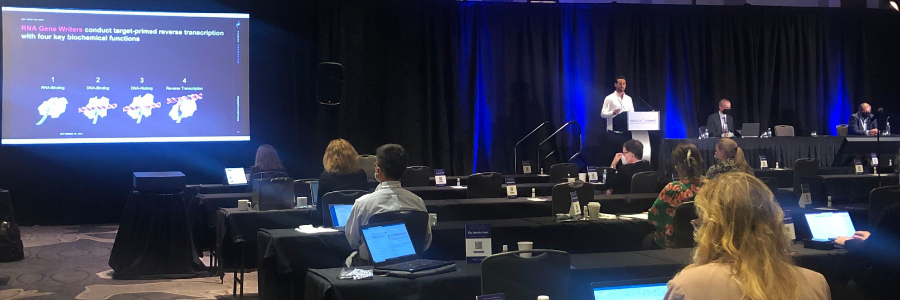Considering Payors on the Path to Patient Access
Emily Walsh Martin, PhD - September 23, 2021
The sessions on the first day of the Policy Summit will provide you with a deeper understanding of the questions, complexities, and solution options at play for patient access to the therapies you are developing.

If you are like me, someone who has spent their career for the most part on the early side of drug development, reimbursement of medical therapies seems like the dark arts. Indeed, it is not unthinkable that a reasonable number of us have been fortunate enough to never have had to tangle with either private or federal/state payors either personally or professionally in our lives.
And so, when our commercial colleagues start to opine about clinical trial design or regulatory strategy at the cross-functional team meetings and how it may impact reimbursement, I’ll admit that every once in a while, I, too, have glazed over.
However, after I attended the ASGCT Policy Summit in 2019 for the first time – that all changed.
Prior to that, the topic of reimbursement either triggered ennui or, when I heard a news story where it didn’t work well, anger. After that first Summit, when the speakers and panels began to tease apart the complexities of the public and private payor systems, I realized that it was crucial for early development teams to pay attention to these considerations even as early as development candidate nomination. Why?
Well, the program management adage of “start with the end in mind” certainly captures a lot of the rationale to pay attention to reimbursement and access as early as possible.
So many times, we can be overwhelmed with the path to take a new therapy to IND, that we can inadvertently see the “end” of the journey as successfully treating a first patient. Soon though, that goal shifts to focus on the filing for market authorization. However, particularly with rare diseases and durable gene and cell therapies, often the first clinical trials become an outsized part of clinical evidence used not just by the FDA but also by payors to consider their approaches to the path for patient access.
Take yesterday’s sessions for the Policy Summit:
- Fireside Chat: High-Cost, High-Value Therapies: Lessons Learned From Previous Payment Debates - Demetrios Kouzoukas, JD, Board Member, Clover Health; Former Director, Center for Medicare, and Principal Deputy Administrator, Centers for Medicare & Medicaid Services (CMS)
- Advocating for Medicaid Coverage
Diane Berry, PhD, Sarepta Therapeutics
- The Medicaid Pipeline: Gene Therapy Impacts & Precision Financing Options
Mark Trusheim, MIT FoCUS Program
- The State Innovation Landscape
Josh Trent, Leavitt Partners
- MACPAC Recommendations to Congress: Gene and Cell Therapy Payment Systems
Anne Schwartz, PhD, Medicaid and CHIP Payment and Access Commission (MACPAC)
Tucked inside these crucial sessions you will not find all the answers. But you will find a deeper understanding of the questions, complexities, and solution options at play for patient access to the therapies you are developing. For example:
- Why does it matter whether the patient needs to be admitted to receive treatment?
- Why does it matter that we don’t know the durability of our therapy yet?
- Why should we consider investing in Ph3/commercial manufacturing enablement earlier in development – given what we continue to learn about the importance of product quality in durability and efficacy?
- What inclusion/exclusion criteria are useful for early development but perhaps will present an outsized challenge to access later – and why might that be the case?
- How has the Accelerated Approval regulatory path impacted payor impressions historically and what might be the impact moving forward?
The list of development questions goes on and on.
And dare I say it, you may also find empathy for payors. To be clear, you likely won’t find empathy for the payor systems which have been kludged together in some kind of seemingly intractable Rube Goldberg machine to dole out life-changing therapies to the people who need them. But rather, for the challenges ahead of public and private policy makers as they try to find a path to accommodate these algorithm-breaking therapies into their approach to providing healthcare. And maybe, just maybe, you may find that small adjustments to the early development path for the therapy you are developing could have outsized impact on the access later.
If you attended yesterday’s sessions, I hope you found them as thought provoking and eye opening as I did. However, if you are like me, you are probably looking forward to listening to them again, which you can do on demand here for 30 days. And if you haven’t registered for the 2021 Policy Summit yet and missed yesterday, it’s not too late! Join the meeting today and listen to the Day 1 sessions when you can, because if your goal is to bring these therapies to patients, you can’t do that without considering their path to access.
Dr. Walsh Martin is a principal at Tremont Therapeutics currently on sabbatical and a member of the ASGCT Communications Committee.
Related Articles